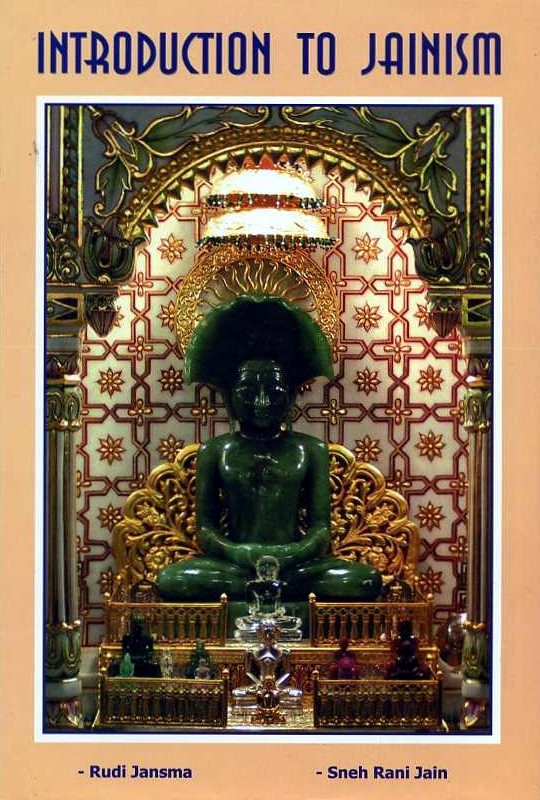A sitting posture symbolizes
meditation and repentance;
standing he accepts completely
what comes to him, without resistance
In 2004 I was already living in Jaipur, Rajasthan, but until then most of my knowledge came from books and from discussions with learned Jains during earlier travels through India. I thought it was time to step outside the limits of theory alone, and take a look around the country. First I visited a temple in Amber City (i.e. Amer), which is much older than Jaipur but is now a suburb of this city of millions. Apart from their beautiful and refined architecture Jain temples are characterized, in their interior by an abundance of simple but perfect statues of their spiritual teachers, the 24 Tīrthamkaras. An outsider would hardly distinguish them from Buddha statues - but they are totally nude, and often they have a four-leaved flower on their heart, signifying their pureness, having left behind all four types of karma (see chapter 4). Most statues in Rajasthan are made of pure white and shining marble - shine being the characteristic of Indian marble - of the finest granular structure. All radiate simplicity, without adornments. Jains recognize no creative God, but only perfected people of pure soul who once were like they, and who can serve each of the beholders as an example - as an example of the ultimate goal of complete realization and perfection of what we really want to realize in the depths of our hearts - which in reality we already are. You don’t have to be a Jain to feel admiration for these Jinas, these conquerors of all illusionary ideas, weaknesses and obstacles within themselves. Who would not want to have the power and compassion of someone with an unlimited intellect and spiritual insight, unhampered by physical and psychological suffering? In fact this desire is our only real hunger.
The atmosphere in Jains temples is usually very quiet and pure. You will not find any people who come to beg the gods to solve their problems. The visitor is only strengthened in his or her feeling about the right external as well as inner attitude in life and stimulated towards self-discipline, No ministers or priests pose themselves between our present condition of life and the aim of reaching perfection. All one does, thinks or feels is the cause of one’s own future - and every suffering is the result of selfish choices in the past, however subtle and seemingly insignificant they may be.
The next weekend I decided to visit a temple in Sanganer, another ancient suburb of Jaipur. There things were a little different. An old man was sitting at the platform above the stairs to the temple’s entrance, and I had to give him all I had. I was not allowed to take my camera. One wants to show the beauty of all this to your friends back home. My thought was, ‘What sense does all this make when you’re not allowed to take pictures and the beauty is only for yourself as long as your memory can keep it. Religious fanatics prefer to keep these places pure but for themselves alone, rather than sharing their good things with others!” But now, after a year among the Jains, I understand these things differently. For the Jains these sacred places are not merely places of beauty and harmony, but places where thought has to be pure, where the thought atmosphere has to remain pure - where things are only done and spoken and thought on a level which is above everyday thought and emotion. This is not an illusion. Sacredness is an actuality, which can be felt, and which has to be preserved at all cost, which serves a far greater purpose than the mood of the visitor alone. I feel that sacred places of particular types are connected and form a protective web around the world, the value of which is far beyond what the eye and mind of a curious tourist who has not trained himself in purity and devotion can perceive.
 Dr. Sneh Rani Jain
Dr. Sneh Rani Jain
 Publisher:
Publisher: